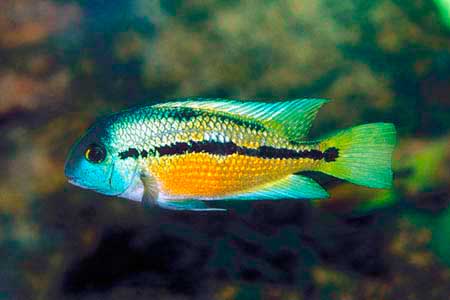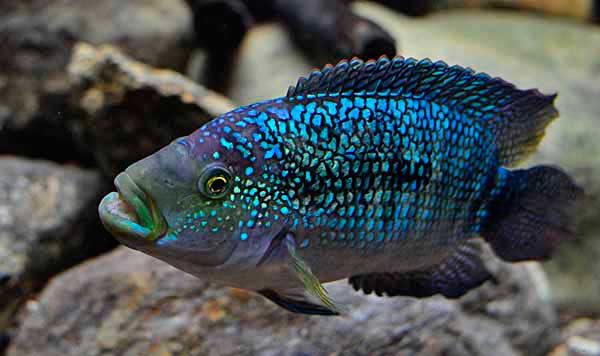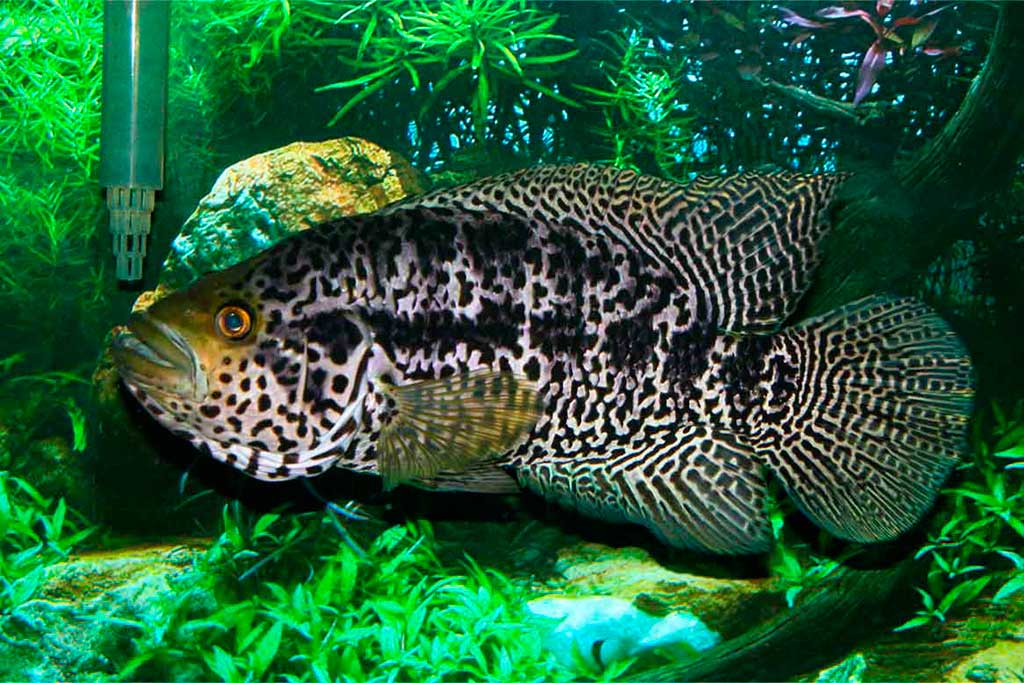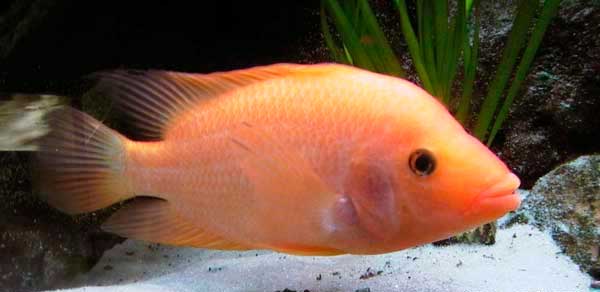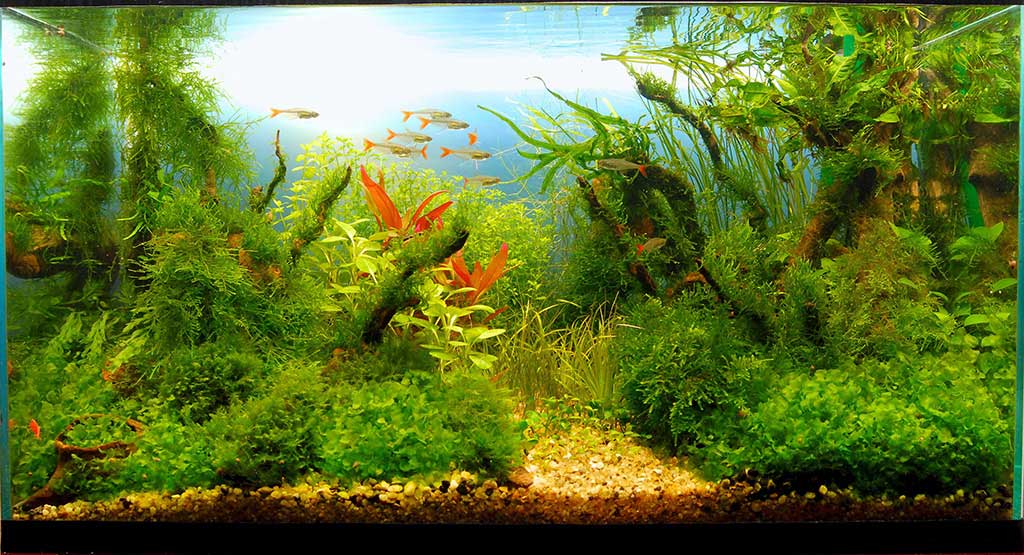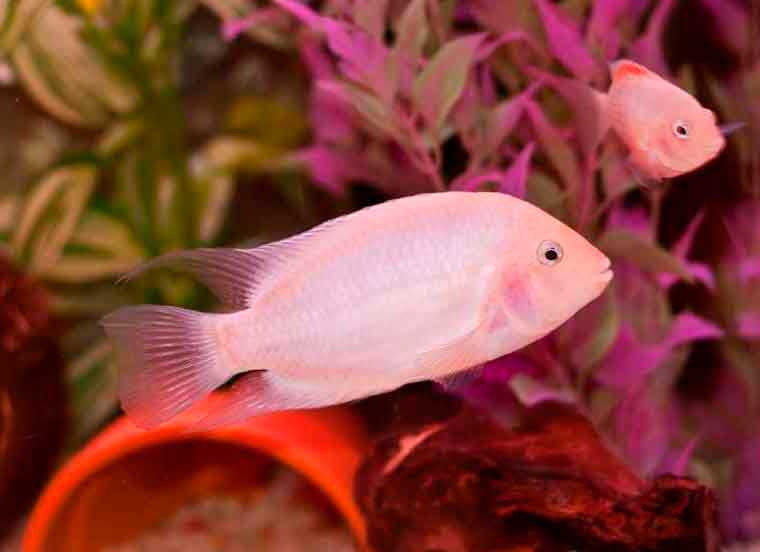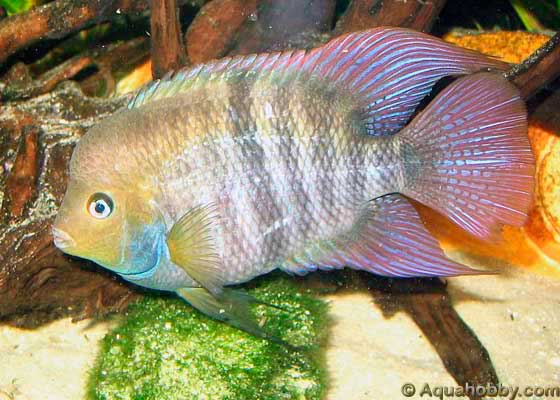Nicaraguan cichlasoma appeared behind the glass of our artificial lakes relatively recently. Since its appearance, this aquarium fish has been invariably popular among cichlid lovers due to its original appearance and coloration. Over time, its popularity is only increasing.
| classification | |
|---|---|
| kingdom | Animals |
| Type | Chordates |
| Class | Radial fish |
| Squad | Perch |
| Family | Cichlids |
| Rod | Cichlasoma |
| View | Cichlasoma nicaraguensis |
Original title: Heros nicaraguensis.
Synonyms: Copora nicaraguensis, Copora nicaraguense, Herichthys nicaraguensis, Cichlasoma nicaraguense, Theraps nicaraguensis, Heros balteatus, Hypsophrys unimaculatus, Cichlasoma spilotum, Cichlasoma balteatum.
Russian name: Цихлазома никарагуанская.
Other languages: Butterfly cichlid, Nicaragua Cichlid,Traumbarsch, Nicaragua-cichlide, Moga, Spilotum, Rotfleckcichlide, Nikaragua Buntbarsch.
Habitat
Slowly weaving waters of lakes of the Pacific slope of Central America. The type specimen was caught in Lake Nicaragua, to which the species owes one of its names. Occurs also in volcanic lakes of Costa Rica and the San Juan River basin.
Nicaraguan cichlasoma Description
It appeared in our country in 1979.
In nature, the body length of the male reaches 25 centimeters. Females, as a rule, are somewhat smaller. When kept in aquarium conditions, the maximum size rarely exceeds 20 centimeters. The lower edge of the head with the lower edge of the anal fin forms an almost straight line. Whereas the upper outline of the torso has the form of an arc, the maximum of which falls on the articulation of the head with the torso and further to the tail gradual narrowing of the upper-lower size. This gives the animal some resemblance to a drop.
The unpaired dorsal and anal fins extend to the base of the caudal fin. They are transparent and have turquoise edging. The rear half of the body is colored mainly in yellow-brown tones of varying intensity with a metallic sheen, more pronounced in the caudal part of the body. The front part of the body and head are turquoise in coloration. The coloration of young individuals is less conspicuous.
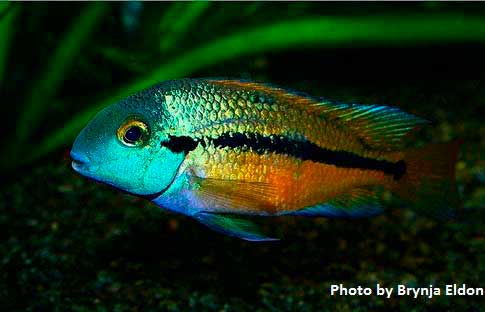
A dark band runs from the eyes to the base of the caudal fin. This stripe may disappear with age, leaving only two rounded spots on each side. One is located approximately in the middle of the body, the other near the base of the tail. These spots, like the stripe, can vary in severity depending on the general condition of the fish. The abdomen may be orange-pink in color, more pronounced during the spawning season.
How to tell male from female
As in most cichlasmas, the most distinct signs of sex difference in Nicaraguan cichlasoma are manifested during spawning. They are represented by the trapezoidal ovipositor of the female and the cone-shaped ovipositor of the male. In addition to these absolute signs can determine the sex of adult fish by the size and coloration of fins. Females are somewhat smaller and more graceful than their mates.
However, it should be taken into account that female fry grow faster and have a brighter coloration than males. Therefore, focusing only on the size of the body and the intensity of coloration in young specimens is very easy to make a mistake in determining the sex. In males with age on the head appears fatty growth. Also paired fins they have a fairly pronounced dark mottling. In females, the paired fins are transparent and devoid of pattern.
Nicaraguan cichlasoma Aquarium keeping
The aquarium for fish cichlasoma Nicaraguan should be from 100 liters per pair.
The soil can be represented by fine gravel or pebbles. The bottom can also be covered with small white sand with a large amount of silt. The bottom can and even desirable to decorate with large flat stones, snags. A couple of man-made grottoes, caves and rocks will not be superfluous.
Small plants with delicate greenery will be eaten. However, flora with tough, large leaves and a well-developed root system can be quite safe around Nicaraguan cichlasoma.
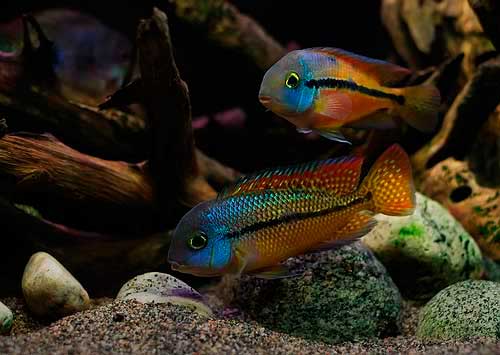
Water parameters do not differ much from those for keeping other Central American cichlasmas. Temperature 24 – 27 ° C. Hardness 10-20 °dH. pH = 7-8°.
The lighting should be selected according to the needs of the plants that you decide to use in the design of the aquarium. It should only always take into account that with insufficient lighting will not only plants will not develop well, but also the fish will have a dark color. And with excessively bright lighting water can “bloom”, and the fish in the color again lose – their color will be faded or “erased” semitones. Learn from nature – strive for the golden mean.
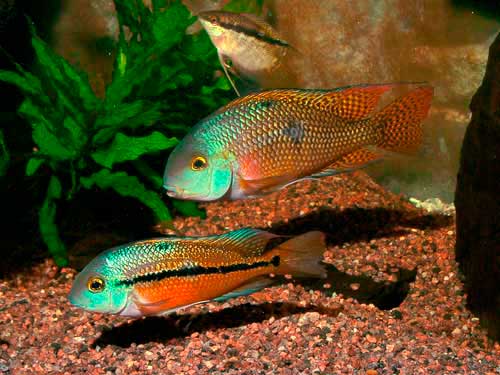
Is filtration necessary?
Aquarium for fish Nicaraguan cichlasoma must necessarily be equipped with both mechanical and biological filtration systems. Cichlids do not like turbid dirty water. Additional aeration is also necessary. Cichlazoma Nicaraguan needs a large amount of dissolved oxygen in the water.
Compatibility is quite good despite occasional reports of Heros nicaraguensis being too bully. Most likely, their bullying is manifested in overcrowded dwellings. In general, it is desirable to follow the general recommendations to reduce the conflict of cichlases. If possible, grow for the joint maintenance of fish from the fry age. Jointly contain fish of commensurate size and similar temperament. Do not overpopulate the aquarium. Create at the bottom of the rocks, grottoes caves, dividing the bottom of the room lake into small isolated areas. Also in this can help thickets of plants. In time to feed. When planting a new fish in the general aquarium to separate it with a glass partition while the inhabitants are accustomed to the newcomer.
Food preferences
In the wild, Nicaraguan cichlasoma feeds on small fish, mollusks, small crustaceans, plants with coarse foliage. At home, they can be fed moths, earthworms, dry and frozen food. Obligatory plant feedings – Lettuce leaves, dandelion, nettle, oat flakes. As always, it is better to feed more often in small portions.
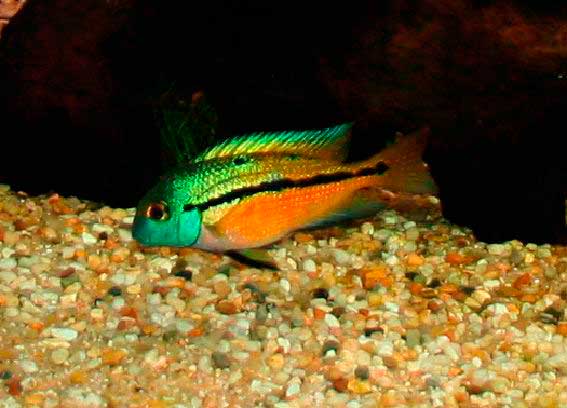
Nicaraguan cichlasoma Breeding in the aquarium
For the first time breeding in aquarium conditions in our country was described by Kochetov in 1980. Spawning took place in a 60-liter aquarium. Producers were 7 centimeters male and 6 centimeters female. The age was about 8 months.
Spawn Nicaraguan cichlazoma can spawn in a common aquarium, but it is still better to provide it with a separate spawning ground.
It is desirable to maintain the following water parameters in the spawning ground. Temperature 27 -29 ° C. Hardness 10 -15 °dH. pH = 7-7.5 °. Increasing the temperature, as well as replacing 30% of the water with fresh water stimulates spawning. Sometimes up to two volumes of water (30% each day) may need to be changed completely within a week.
Set up a spawning ground
The bottom should be covered with fine gravel, pebbles or sand. Cichlazoma Nicaraguan spawn in specially dug holes in the ground. Do not hurt as a couple of grottoes made of large stones or a small canyon. In such shelters fish are also happy to lay eggs. For one spawning female can sweep out from 400 to 1000 transparent light yellow eggs with a diameter of up to 2 millimeters. The older the female – the more eggs. The female takes care of the eggs, as if trying, all the time to collect these grains similar to glass balls in one hill. In fact, this constant shifting of eggs is necessary for their normal maturation stirring. The father of the family at this time is also not idle. He selflessly guards the approaches to the clutch, from any encroachments.
The incubation period lasts from 2 to 4 days. And in 5-7 days the fry under the supervision of their parents will swim in search of the first meal of their lives. Starter food – live dust. Nauplii artemia and cyclops, small daphnia. As the fish grow, it should be transferred to larger feed.
Additional information: Nicaraguan cichlasoma sometimes help guard the eggs and fry of other fish. For example, ichthyologist Kenneth Mack described how male Nicaraguan cichlasoma guarded young Parachromis dovii. The parents of the brood never attacked the volunteers, although under normal conditions they sometimes snack on them.
